No.13 Time constant
"Time constant" is one of the setting parameters when measuring the magnitude of sound or vibration with a sound level meter or a vibrometer, or when performing real-time octave analysis (RTA analysis) with an analyzer.
Since the instantaneous waveform of sound or vibration goes up and down (plus or minus) finely, it is not available to read the magnitude of sound or vibration from the instantaneous waveform itself. When evaluating the magnitude of sound or vibration, obtain the "effective value (root mean square value)" from the instantaneous waveform, and then evaluate the leveled value that “effective” value is converted to decibel value.
There are a few ways to obtain the "effective value" from the instantaneous waveform, and one of them is the effective detector dynamic characteristic circuit. Time constant” is one of parameters that determine the characteristics of this circuit.
What is the effective value?
The efficient value is also called the square root of the mean square value, and is the square root of the mean value obtained by averaging the square value of the time waveform over a certain time.
If the time waveform is x (t) and the average time is T, the effective value X can be calculated by Equation 1.

If the data with the sampling interval t represents xi=x (i t) and the number of sampling points represents N = T / τ, the efficient value can be calculated by Equation 2.
When evaluating the magnitude of sound or vibration, the obtained efficient value is leveled

If the data with the sampling interval t represents xi=x (i t) and the number of sampling points represents N = T / τ, the efficient value can be calculated by Equation 2.
When evaluating the magnitude of sound or vibration, the obtained efficient value is leveled (converted to the decibel value) and evaluated with the value L in dB. The conversion to the decibel value is calculated by Equation 3 or Equation 4.
The decibel value can be obtained from the effective value X using Equation 3, however, it is easier to calculate using Equation 4 as the effective value is obtained taking square root in Equation 1, 2. X0 is the dB reference value, which is 20 μPa for sound. The dB reference value when evaluating vibration depends on the standard.
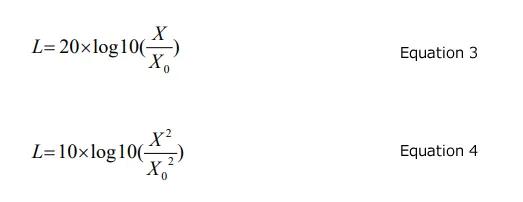
When calculating the A-weighting and C-weighting Sound pressure level for Sound, or when calculating the vibration level for vibration, the effective value and the decibel value for the time waveform obtained by filtering sound and vibration signals with their respective frequency weighting characteristics are calculated using equation 1 to 4.
As for the frequency weighting characteristics, I will explain in another column.
Calculating effective value
If there is a time waveform obtained by sampling (A/D conversion) sound and vibration signals, the effective value can be calculated from Equation 2. However, if the effective value is calculated from the entire time waveform, the effective value of the entire waveform can be obtained, but the time change of the effective value cannot be obtained.
One of the simple methods to obtain the time change of the efficient value is time division (1). For example, divide the time waveform into every 125 ms, then, the efficient value is obtained from those time waveforms, and the efficient value is plotted on the horizontal axis.
Another is the method to obtain the efficient value by the RMS detection dynamic characteristic circuit explained later (2). This method is approximate, but generally used. The "time constant" is a parameter that determines the characteristics of this circuit. As the time constant value, 125 ms is often used for sound pressure level measurement, and 630 ms is often used for vibration level measurement.
Figure 1 shows the results of obtaining the time change of the efficient value from the time waveform of the symphony sound by (1) time division and (2) the RMS detection dynamic characteristic circuit. The time division was set to every 125 ms, and the time constant of the dynamic characteristic circuit was set to 125 ms.
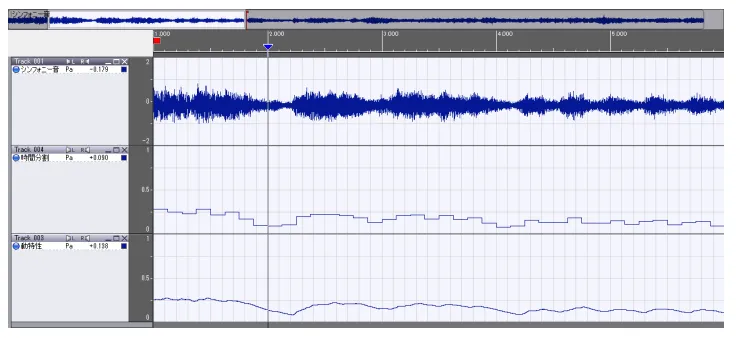
Fig.1 Time waveform and Effective value of symphony Sound
Upper: time waveform,
Middle; effective value by (1),
Lower: effective value by (2)
As for the method (1), by sampling (A/D conversion) the time waveform to obtain the numerical data, the efficient value is calculated from the numerical data. Today, it is a simple process using digital signals can be performed with an A / D converter, however, the complicated circuit was required to perform this process using only analog signals.
As for the method (2), it is an approximate method, but it is widely used since it can be easily performed by an analog circuit with a resistor and a capacitor. The efficient value is obtained by performing a numerical calculation corresponding to the RMS dynamic characteristic circuit is widely used in the case of method (1) as well.
RC series circuit
RMS detection dynamic characteristic circuit is based on RC series circuit, and which resistance(R) and capacitor (C) are connected in series (Fig.2). Here, τ = RC is a value called the time constant of this circuit.
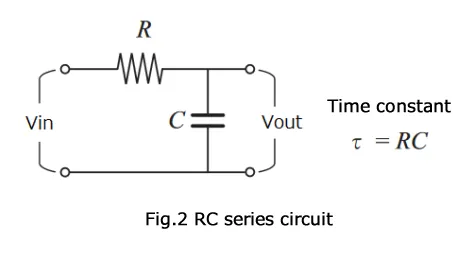
When one cycle of the rectangular wave pulse is input into RC series circuit, the response waveform of RC series circuit is shown in Figure 3. In the time constant τ seconds after the pulse is input, it becomes approximately 0.63 and towards to exponential “1”. In the time constant τ seconds when the pulse breaks, it becomes approximately 0.37 and towards to exponential “0”.
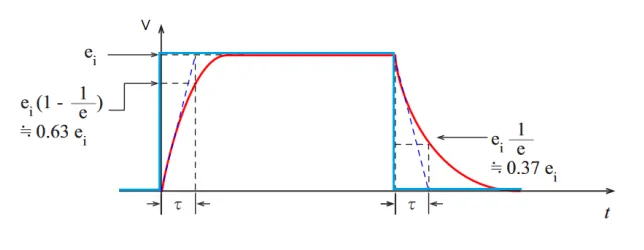
Fig.3 The rectangular wave pulse (blue) vs The response waveform of RC series circuit (red)
RMS dynamic characteristic circuit
By combining the above RC series circuit and the circuit that squares the time waveform, you can create a circuit that outputs the efficient value of the input signal.
Figure 4 shows the block diagram of process for the sound level meter that the effective value is obtained from the instantaneous waveform using the RMS detection dynamic characteristic circuit and converted to the decibel value (leveled). When the time waveform of sound or signal is squared and passed through RC series circuit, the effective value can be obtained. By inputting into logarithmic computation circuit, the RMS value is converted to the decibel values as leveled in the Figure 4.
To obtain the efficient value using the RMS detection dynamic characteristic circuit, it is necessary to take the square root of the output of the RC series circuit. However, when leveling with a logarithmic computation circuit, it is easier to input the square value of the efficient value into the logarithmic computation circuit without taking the square root.
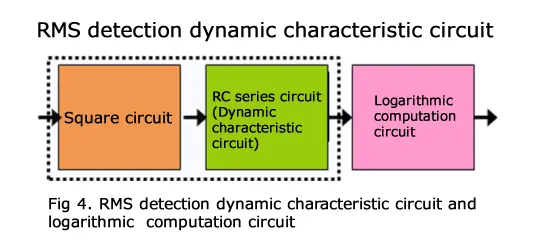
RMS dynamic characteristic circuit and output waveform
Figure 5 shows the output waveform when a 25 Hz sine wave is passed through the RMS detection dynamic characteristic circuit. The display range is 0.5 seconds. The upper row is a sine wave waveform with 25 Hz and 1 Pa of half amplitude, the middle row is the squared value of the sine wave, and the lower row is the output of the RMS detection dynamic characteristic circuit, which is the squared value of the efficient value. The time constant is 125 ms.
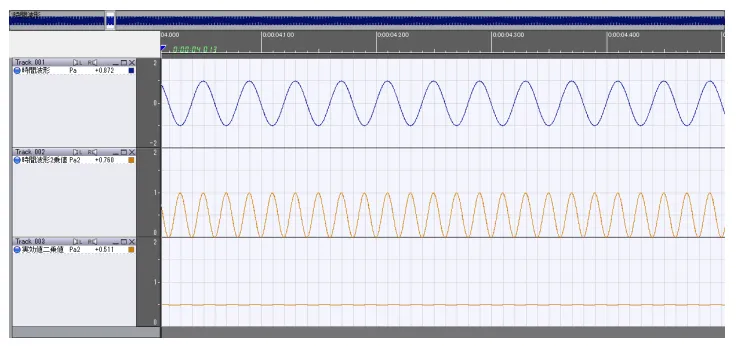
Fig.5 RMS dynamic characteristic circuit and output waveform
The calculation of the efficient value by the RMS detection dynamic characteristic circuit is an approximate method. If the frequency of the input signal is low, the efficient value obtained will fluctuate slightly. In Figure 5, the input waveform has half amplitude of 1 Pa, so the efficient value should be 0.707 Pa, the square of the efficient value should be 0.5 Pa2, and the sound pressure level should be 90.97 dB. The actual output waveform fluctuates in the range of approximately 0.487 to 0.513 Pa2. When converted to sound pressure level value, the fluctuation is 90. 86 to 91. 08 dB.
The fluctuation decreases as the frequency of the input signal becomes higher. Since normal sound has a frequency component higher than 25 Hz, the fluctuation of the value obtained by the dynamic characteristic circuit does not matter much.
The longer the time constant of the dynamic characteristic circuit, the smaller the fluctuation. In the example shown in Fig. 5, when the time constant was set to 1 s, the fluctuation was 90. 88 to 90. 93 dB in terms of sound pressure level, which was smaller than that at 125 ms.
Summary
This time, I have explained about the RMS detection dynamic characteristic circuit and one of its setting parameters, "time constant" when measuring the magnitude of sound and vibration with a sound level meter or a vibrometer, or when real time Octave Analysis (RTA analysis) with an analyzer.
Obtaining the efficient value of decibel value of time waveform from the RMS detection dynamic characteristic circuit is an approximate method. When the frequency of the signal is low, the efficient value and decibel value fluctuate, and this fluctuation becomes smaller as the time constant of the dynamic characteristic circuit becomes longer.
In addition, I have explained the parameters of the RMS detection dynamic characteristic circuit as "time constant", but in standards for sounds and vibrations, terms such as time weighting characteristic and dynamic characteristic are used.
(Y·K)
